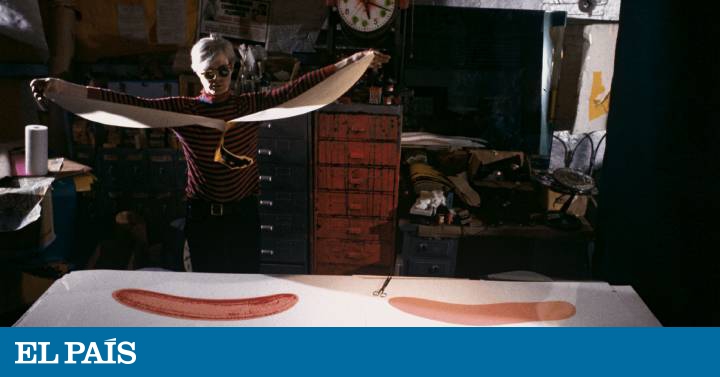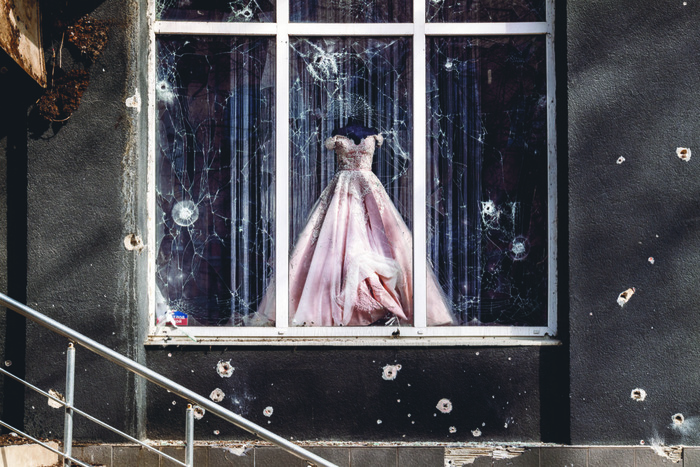There was a time when not even a fly was heard in artists' studios. Silence reigned among the Seurat models, almost hieratic. Also when Josef Albers moved the prototypes of his paintings on the floor looking for color compositions or when Rodney Graham let the cans of paint slide keeping his cigarette between his lips. The steps are the only thing that sounded between the four walls on which Bruce Nauman looked for another dimension of the world. Brancusi lived with the silent white of its walls. Frida Kahlo, with the balls of the world on her table. Only the gaze of Lee Krasner accompanied the dripping of Jackson Pollock in his barn and the coffee the drawings of Dorothy Iannone on his kitchen table. That, too, was often the studio of Marisa Merz and a host of other female artists working under another kind of silence. When Clarice Lispector posed for De Chirico in his studio in Rome, he did not mumble the turpentine. Only a shout from the newspaper spokesman interrupted that creation to announce the end of World War II.
In broad outline, it is what feeds the myth of that lonely, chaotic, mysterious and even magical place that appears in the collective imagination when thinking about artists' studios. Distant places like remote islands. Conceptual art turned this idea around, calling it obsolete in the sixties, also fueled by the rise of the happening , the art of action and the creators of land art who were on the move. Andy Warhol also contributed his own by opening The Factory, his studio in New York. Since 1963 it has operated at 231 47th Street in Manhattan. He then moved him to the sixth floor of 33 Union Square. The important thing there was not the works that Warhol made, but the life that passed around them: an idea of community that today continues to be the lung for many spaces of creation.
Artist studios have docked with the strengths and weaknesses of the global world. The interconnection is total, but also the interdependence. In the almost impossible task of having their own work space, the workshops are shared and financed among many, creating entire families of artists who flee the center looking for workability, not without first pulling marketing by organizing endless events, presentations and activities. There are Nave Oporto and Bad Fame in the Porto neighborhood of Madrid, an area where more and more artists living in the capital are moving. Also the Salamina project, as well as all the artistic spaces that have landed in L'Hospitalet de Llobregat, already converted into creative factories on the outskirts of Barcelona.
Today the workshop is an idea rather than a place. A notebook, a corner, an SME, a memory card, the hole under the bed. From Joe Colombo's Boby 3 cart where everything is kept by Isidoro Valcárcel Medina in his small flat in Madrid to Studio Olafur Eliasson in Berlin with 120 attendees, the options skyrocket with spaces full of possibilities and polarities. Little is said about the class issue and the VIP category that gives you that own room from which to communicate with the world without thinking about rental costs or how to finance a stay abroad. That also determines what kind of study one may need or have.
Already in the nineties, artists were talking about post- study: a space to which it does not always return, as changeable as the times, as performative as the artistic itself. There is nothing romantic there, but the practicality of those who think about how to adapt to the times. In that talk are artists like Pawel Althamer, Tino Sehgal, Artur Zmijewski or Joe Scanlan, trying to rejuvenate the studio as a place of production to think about some of the intrinsic questions of the artist's work: what does it mean to work? What does it mean to be productive? Does the routine portend some kind of success? Does discipline have a positive value? Is having a space synonymous with visibility? What is the artist's schedule? And above all, what happens when you can't go to work because you have to stay home?









